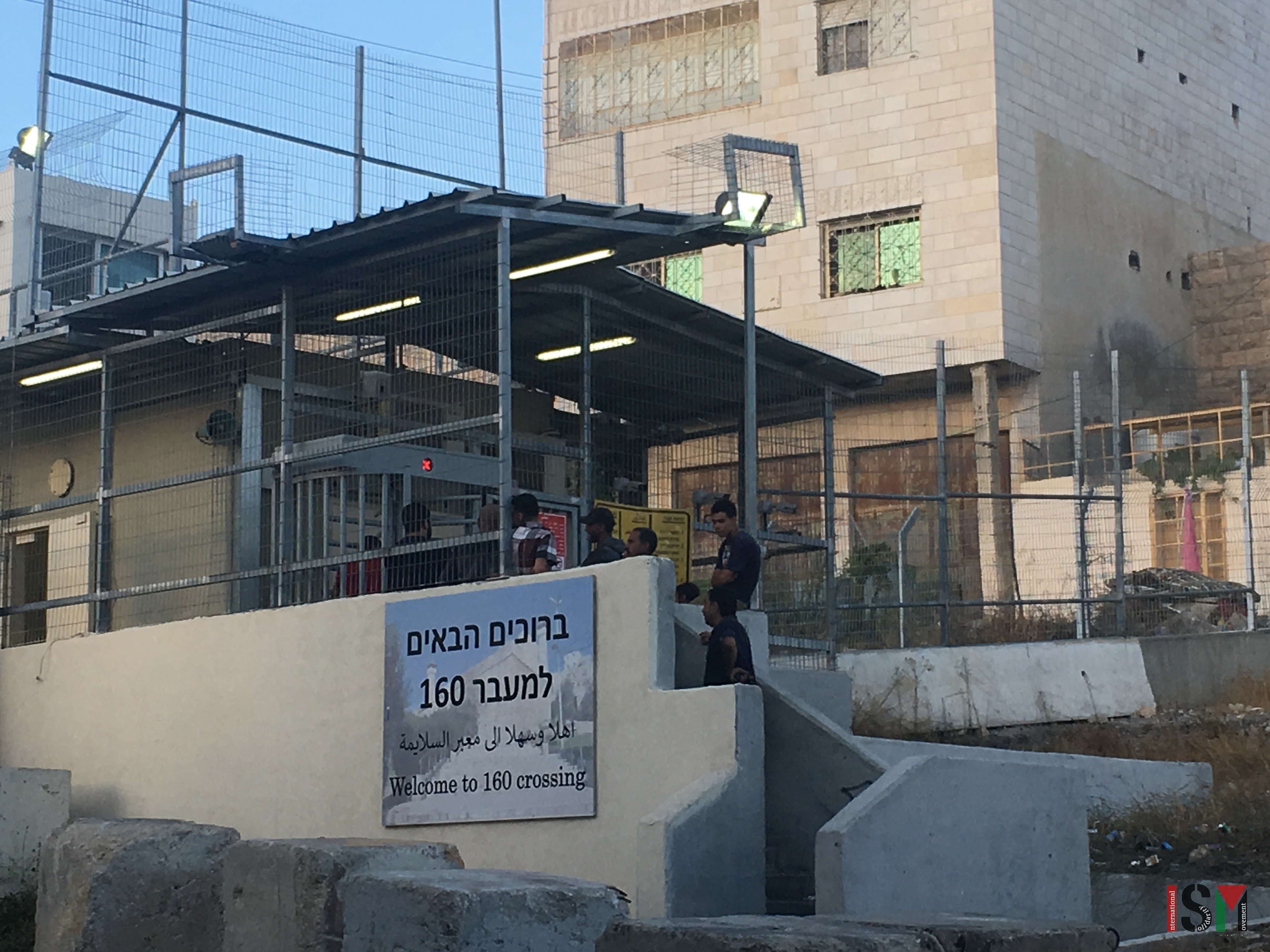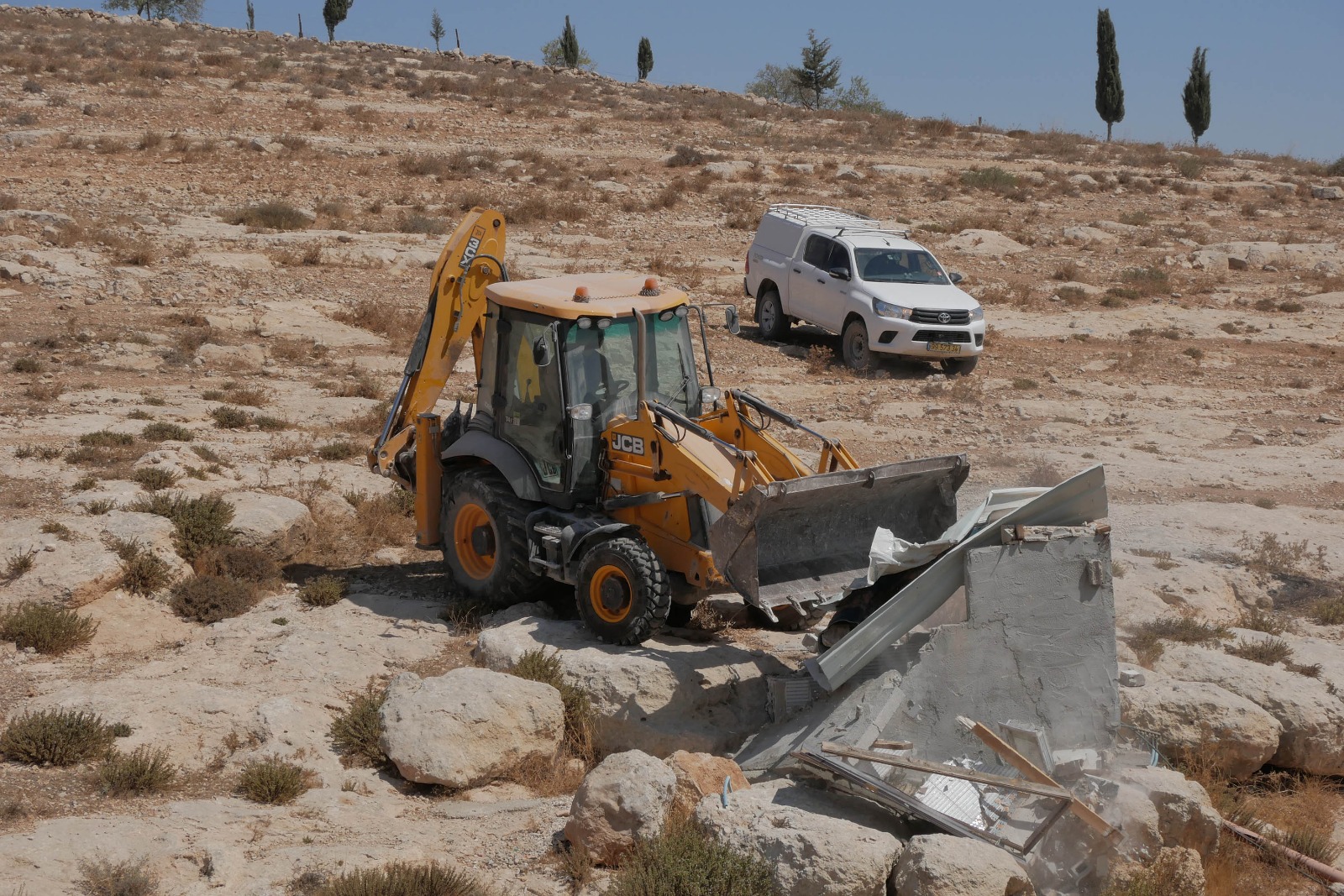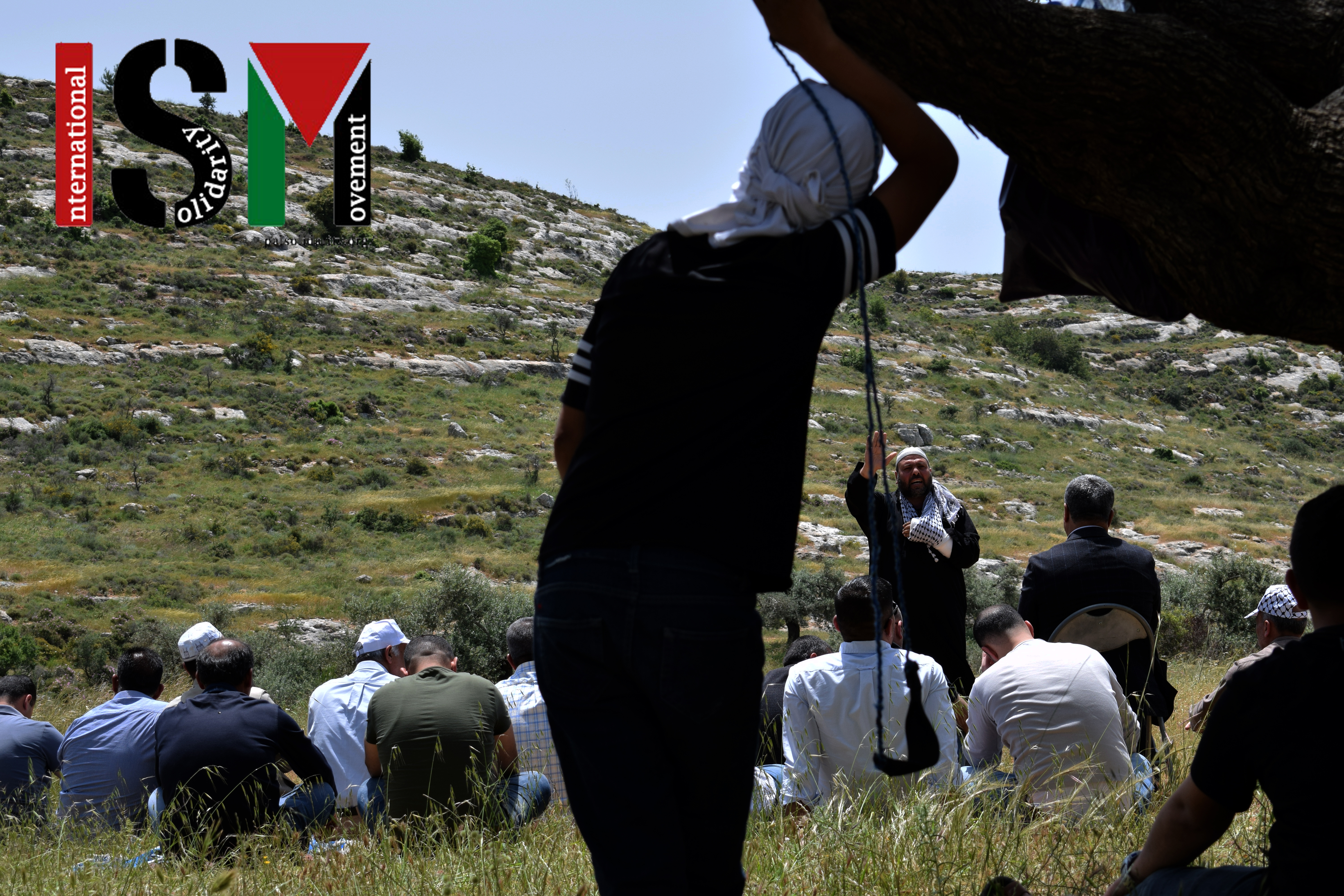Tag: Apartheid
-
Waiting at a checkpoint
An ISM activist writes about her experiences volunteering in Hebron (Al Khalil) during Netanyahu’s visit to the city.
-
3 minutes after people finish praying at the al-Risan hill, the Israeli army fire tear gas; Protestors never give up
April 26, 2019 | International Solidarity Movement | Mount al-Risan, occupied Palestine This Friday a large group of worshippers gathered for prayers at Mount al-Risan. When they arrived, two groups of Israeli military were already on each side of the valley waiting for them. The worshippers prayed together in front of the hill, as always…



